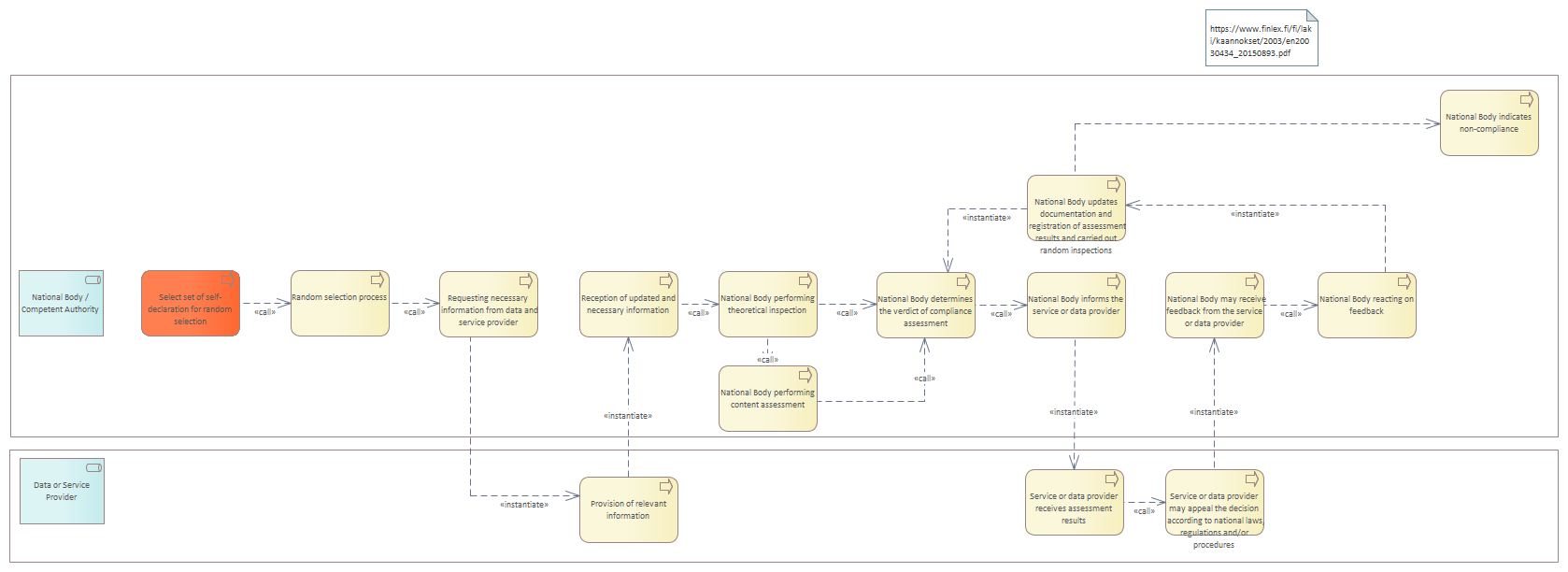Compliance assessment

|
Project:
|

Compliance assessment : FRAME_Diagram diagram
The process of random inspections starts with listing all valid and active self-declarations per delegated regulation. <br/>Based on a pre-determined number of self-declarations, Self-declarations are randomly selected for inspection, no action is taken for self-declarations not selected for inspection. <br/>For self-declarations selected for random inspection, a theoretical assessment is carried out. In short, the theoretical assessment is a compliance review in which the content of the self-declaration is compared against the compliance requirements derived from the applicable delegated regulation. After the theoretical assessment, a content assessment is carried out. The Member State, taking into consideration the NAPCORE recommendations, decides to which extent the types of assessment (theoretical and content assessment) are carried out by the National Body.). If an organisation registered multiple data sets and services, the National Body can make a limited selection for the content assessment. In this case, the most relevant data sets should be selected. The inspection methods to be applied in content and theoretical assessment need to be suitable for the delegated regulation and the data or service type, and they should preferably be verified in the local context before actual random inspections are started.<br/>The verdict of the compliance assessment is determined based on the results of theoretical and content assessments. A “pass” verdict will be assigned if neither the results of the theoretical assessment nor the results of the content assessment indicate non-compliance to the delegated regulation. Otherwise, a “fail” verdict will be issued.<br/><br/>Example for national legislation:<br/>https://www.finlex.fi/fi/laki/kaannokset/2003/en20030434_20150893.pdf<br/><br/>
|

